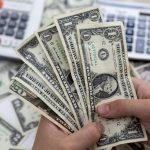
LONDON (Reuters) -The Swiss franc fell sharply against the dollar on Thursday and hit its weakest since last July against the euro, after the Swiss National Bank (SNB) unexpectedly cut interest rates, while the pound edged lower ahead of a Bank of England (BoE) meeting.
The euro climbed against the Swiss franc to 0.978, the most since July 2023. It was last up 0.7% to 0.975. Against the dollar, the Swiss franc fell 0.9% to 0.8948, after briefly hitting its lowest since November.
The SNB cut its main interest rate by 25 basis points to 1.50%, a surprise move which made it the first major central bank to dial back tighter monetary policy aimed at tackling inflation.
A majority of analysts polled by Reuters had expected the SNB to keep rates on hold at 1.75%. It was also the first rate cut by the SNB in nine years.
“It’s the first central bank in the developed world to ease so that shows the direction where the others are going,” said Jan Von Gerich, chief analyst at Nordea.
“The SNB was always the first likely mover, so this shouldn’t have an impact on what the others will do… But from the markets’ point of view, this does open the door to what could happen elsewhere,” he added.
All eyes will be on BoE meeting later in the day, at which the central bank is expected to keep UK rates on hold, although there is a degree of uncertainty over what it might say about the outlook for monetary policy.
Sterling was last 0.1% lower on the day at $1.2773. It has risen 1.2% so far this month.
British inflation slowed in February, official data on Wednesday showed, keeping the BoE on track to start cutting borrowing costs later this year.
The Norwegian crown steadied against the dollar, after Norges Bank kept its rate unchanged, as expected.
The crown was 0.1% higher to 10.5510.
The yen steadied against a strengthening dollar as it drew some support from expectations of further rate hikes from the Bank of Japan later this year and some jawboning efforts from Japanese government officials.
The yen was last 0.1% higher on the day at 151.12, after rallying in Asian trading hours and reversing some of its heavy losses in the wake of this week’s BOJ policy pivot.
The dollar index rose 0.3% to 103.55 after falling almost 0.5% on Wednesday.
In a week packed with central banks meetings, the Federal Reserve maintained on Wednesday its projections for interest rate cuts for the year in the face of upside surprises on inflation, and did not strike a more hawkish tone as some investors had feared.
The Australian dollar jumped after data on Thursday showed employment rebounded sharply in February and the jobless rate dived far below forecasts, pointing to a still-tight labour market.
The Australian dollar rose 0.3% to $0.66080 after jumping to a one-week high of $0.66340.
To read the full article, Click Here

